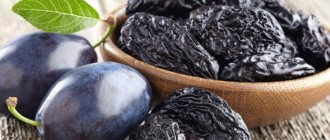The olive tree is characterized by amazing vitality. It can grow even from the smallest root left in the ground. The plant can stand for centuries, even if it is split by lightning. In Mediterranean countries it is believed that those who consume the fruits of the plant receive the same vitality. It is worth taking a closer look at how olives are good for our health.
The fruits of the olive tree, like olive oil, are very highly valued. Processing methods that eliminate their bitterness have been discovered relatively recently.
How to choose a canned product
Many people do not understand the difference between olives and black olives. These are the fruits of the same olive tree , but collected at different periods of their ripeness.
When ripe, they can change color from bright green to dark purple or black. Olives are young fruits that have not yet ripened , while olives are fully ripened.
The fruits of the olive tree are:
- Green. They are collected before technical maturity, but are already of normal size.
- Combined. They are collected during the ripening period, but before full maturity.
- Black. They are harvested when fully ripe.
- Blackened by oxidation. The fruits are unripe, but color is achieved by treating with an alkaline solution.
Using the labeling system, it is difficult to determine which olives were prepared traditionally and which were prepared using the accelerated technology. If they were artificially colored, the brine will contain iron gluconate (E579) .
Olives also differ by variety. Their main characteristic is their caliber. Its value is equal to the number of fruits per 1 kg of dry weight.
Olives are harvested entirely by hand, which is why they are expensive.
To ensure that the selected product is of decent quality, consider the following points:
- Please note the manufacturer. The world's main suppliers of olives are Italy, Greece, Spain. But they are also produced in Israel, Chile, Tunisia, Argentina. Elite Greek olives are the most expensive. They have a rich taste, dense flesh, and a small bone that is easily separated.
- Consider the expiration date. Naturally prepared olives cannot be stored for more than six months. If the shelf life on the package is longer, then preservatives (lactic acid) were used. They can increase the shelf life up to three years, but worsen the taste of the product and its benefits.
- Olives can be sold in glass or tin containers. The tin one is cheaper, it does not allow light to pass through. The glass one allows you to see the size of the olives before purchasing. Glass will not react with the product. Do not buy olives with a cloudy, opaque marinade - they are of poor quality.
- If the product is good, the caliber will be indicated on the packaging. The smaller it is, the larger the fruits will be. Standard – 80-320 olives. The maximum spread is indicated on the can, for example, 120/150. If there is too much scatter, it makes sense to say that different varieties are pickled in the container.
- Ripe completely black olives are used not for preservation, but for the production of olive oil. The black color is the result of processing. Don't be afraid of the unusual tone of the fruit. It depends on the place where the plant grows, the variety, and the level of maturity - from pink to black-violet.
- If you want to buy a quality product, be prepared to spend money. Good olives are hand-picked and take a long time to prepare, so they cannot be cheap.
We recommend reading: The benefits and harms of pumpkin for the body, how much you should eat
Application
Neither black nor green olives are eaten raw. Raw olives are used to produce olive oil. For culinary purposes, olives are pickled or preserved. The taste of olives also depends on the method of preservation - hot, sour or salty.
In the Mediterranean region, olives are an everyday cold snack. They are served with vegetables, meat, fish, cheeses and alcoholic beverages. So, an olive is always added to a martini glass. Canned olives are also added to hot dishes - pizza, soups, such as solyanka.
Market Analytics
- Global cosmetics market 2021: an unprecedented test for the global cosmetics industry
- Top 10 Cosmetic Research and Development of 2021
- 2020 in the beauty industry – innovation without borders
Convenient search for beauty salons on our website
Beauty salons in Moscow Beauty salons in St. Petersburg Beauty salons in Ekaterinburg Beauty salons in Novosibirsk
Latest blog posts on our website
- Naturecream / Properties of the “Sunny” oil itself
- Naturecream / “Sugar” wrinkles - or what glycation can do
- Naturecream / Esterified oils
- Naturecream / Arnica - the magical plant of alchemists
- Naturecream / Tremella Extract - Snow Mushroom Detox for Skin
- Prostye-sovety / How to visually enlarge your lips with makeup
- Naturecream / Apricot kernel oil for face
- Naturecream / MATRIXYL3000 - the best skin elasticity stimulator
- Naturecream / SPF in Natural Oils
- Naturecream / Geranium (Pelargonium) oil for skin health and beauty
Latest forum topics on our website
- Natalya / How to properly make a gelatin mask?
- Mrs._Smith / Badly sunburned! What to do?((
- Ice / Is it necessary to combine fitness classes with a diet?
- Antonova / What can be used for hair loss?
- Radio operatorKat / Who was on a protein diet?
Other articles in this section
| Chickpeas Chickpeas, or chickpeas, are a legume plant traditionally grown in the Middle East. In this region, protein-rich legumes still form an important part of the diet. It is also called Turkish peas. The first mention of chickpeas occurs about seven thousand years ago. It was grown by the ancient Egyptians, Greeks and Romans, and in the Middle Ages, Spanish and Portuguese travelers brought the crop to the New World. |
| Fried potatoes Potatoes belong to the nightshade family, which also includes tomato, eggplant, and pepper. There are more than 100 edible varieties of potatoes, which differ in size, shape and color of tubers, and starch content. The homeland of potatoes is in the mountainous regions of South America. Researchers believe that the Indians began growing this vegetable crop more than 4000 BC. e. Christopher Columbus brought potatoes to Europe, and thanks to Peter I, the vegetable spread to Russia. |
| Boiled beans Beans, like peas, belong to the legume family. The bean is native to Latin America, from where Spanish colonialists brought it to Europe in the Middle Ages. As a rule, this is a climbing plant, but bush varieties are also found. Bean fruits are hard, round seeds hidden in oblong pods. There are many types of beans, which differ in color, shape, and pod length. |
| Lovage As a medicinal plant, lovage has been known since ancient times. Galen, Pliny and Dioscorides mentioned its healing properties in their works. Lovage is a member of the Apiaceae family, like parsley and celery. All parts of the plant are edible - leaves, roots and seeds. Lovage is a fairly unassuming perennial plant that grows wild in moist soils, reaching a height of almost two meters. |
| Fennel Crunchy and slightly sweet, fennel plays an important role in the national cuisine of European countries, especially France and Italy. This plant has been grown since ancient times and is even mentioned in ancient Greek myths. According to legend, fennel is not only closely associated with Dionysus, the god of wine and fun, but with its help people learned about fire. On a fennel stalk, people were given an ember stolen from the gods. Fennel's aromatic taste is reminiscent of anise, with which it is often confused. Fennel is the closest relative of dill. |
| Nettle Nettle is known throughout the world for its “stinging” leaves. The leaves and stem of nettle are covered with hairs, the chemical in which causes irritation when in contact with bare skin. |
| Baked Rutabaga Rutabaga belongs to the cruciferous family and is a distant relative of cabbage. They eat a round root vegetable with a purple skin, similar to a turnip. Presumably, rutabaga appeared as a result of crossing wild cabbage and turnips in the 17th century. Rutabaga dishes are most popular in the Nordic countries and North America. |
| Dried peas Dried peas come in green and yellow colors. Yellow peas are more common in Russia and Northern Europe. Pea pods are harvested when fully ripe and then dried. These peas can be stored for quite a long time, at least a year. Ancient peoples consumed peas for thousands of years. It was only in the 16th century, when sweet green peas appeared, that people began to add fresh peas to their food. In the 19th century Peas have played an important role in the study of genetics. So, the botanist Mendel used it for his breeding experiments. |
| Stevia Stevia is a South American plant of the Asteraceae family. The Stevia Rebaudiana plant is also known as sweet leaf or sugar leaf. In Latin American countries, it has been used as a sweetener for hundreds of years, but on the European continent they learned about this plant only in the 19th century. |
| Chinese cabbage The birthplace of Chinese cabbage, as the name suggests, is China. This is a green leafy vegetable that contains a huge amount of useful substances. There are many varieties of Chinese cabbage, and it is very popular in oriental cuisine. The leaves have a sweet and slightly pungent taste. Chinese cabbage is very useful for those who want to lose weight. |
Chemical composition, calorie content and nutritional value
Olives are a valuable nutritious product . They include about a hundred active components, vitamins A, C, E. The pulp contains fats, proteins, sugars, pectins, ash components, and plant lipids. The peel is also useful.
100 g of product contains 2.2 g of protein, 5.1 carbohydrates and 10.5 fat.
Calorie content of 100 g of olives – 166 kcal. One piece weighing about 3 g contains approximately 5 kcal.
Health Benefits
The fruits of the olive tree contain valuable polyunsaturated fats that help normalize cholesterol levels. Proteins, sugars, vitamins, mineral salts, and esters are valuable.
The composition contains minerals (copper and sodium), dietary fiber. Dark olives are rich in antioxidants.
This combination of beneficial substances has a beneficial effect on the entire body, maintaining and strengthening health.
Regular consumption of olives and olive oil helps normalize and strengthen the functioning of the gastrointestinal tract. The fruits have one unique feature: they almost completely eliminate the risk of stone formation in various organs.
To ensure the prevention of this problem, it is enough to eat only five pieces a week . It is advisable to eat them with seeds, but if you have digestive problems, their use may be contraindicated.
The following properties of olives are known:
- Help reduce the risk of a number of types of tumors.
- Ensure normal functioning of the digestive system and fight constipation.
- Normalizes the functioning of the gallbladder.
- Restore the gastrointestinal mucosa.
- They help speed up the healing of skin damaged due to burns, cuts, and bruises.
- Cleanse the body.
- Normalizes cholesterol levels.
- Helps preserve calcium in bones.
- Reduce the likelihood of angina pectoris and cardiovascular system disorders.
- Calms the nervous system.
- Maintains good mood, energy, vigor.
Regular use of the product helps to significantly reduce the risk of vascular diseases and heart attack.
Use in cooking
The calorie content of olives and olives is high, and their taste is soft and memorable. This makes the fruit an indispensable ingredient for culinary dishes. They go well with vegetables, meat, and fish. It is not for nothing that Mediterranean chefs love to add olives to almost all their dishes.
The fruits of the olive tree are perfect for salads, stews, casseroles, main and first courses. They are often used for stuffing or simply added to alcoholic cocktails to highlight the taste of the drink. Due to their high energy value (the calorie content of olives (one piece) is 15 calories), they saturate and complement any culinary creation. And adding olive oil can add a new taste to old, proven dishes.
Benefits for men and women
Women value them because the fruits have a beneficial effect on the condition of the skin and hair. Vitamin E helps slow down the aging process . And olive oil is one of the favorite products in cosmetology.
This product is also useful for men . It helps them improve potency and increase sperm activity. If you eat olives with pits, you will ensure the prevention of prostatitis and prostate diseases.
Are olives harmful during pregnancy and for nursing mothers?
These fruits, provided they have ripened naturally, are beneficial for pregnant and lactating women. They help maintain tone and performance , which are weakened during this period, and saturate them with vitamins and minerals.
We recommend reading: Pomegranate fruit: beneficial properties, vitamin composition, contraindications
Preserve the beauty of skin and hair , which suffer during pregnancy. But do not eat olives in too large quantities to avoid a negative reaction in your baby.
Olives in the diet of children
The vitamins and minerals in the composition are valuable for children . They contribute to the correct formation of the skeletal system and adequate development of all internal organs. A few olives a day will only benefit your child.
Use in old age
In older people, the product will retain calcium in the bones and reduce the risk of various diseases. Vitamin E in the composition is valuable: the skin will remain young, fresh, and elastic longer.
Vitamins and minerals found in olives
Vitamins:
choline – 6.6 mg, PP – 0.022 mg, K – 1.4 mcg, E – 1.65 mg, C – 1.5 mg, B6 – 0.012 mg, B5 – 0.015 mg, B1 – 0.003 mg, A – 17 mcg, beta-carotene – 0.204 mg.
Minerals:
phosphorus – 3 mg, potassium – 9 mg, sodium – 898 mg, magnesium – 4 mg, calcium – 94 mg, selenium – 0.9 mcg, manganese – 0.02 mg, copper – 226 mg, zinc – 0.22 mg, iron – 3.32 mg.
See also:
Olive oil for weight loss
See also useful information about other berries:
Acai Blueberry Sunberry Goji Viburnum Raspberry Gooseberry Currant
Contraindications and potential dangers
Olives can be dangerous. It is not recommended to use them for those who suffer from cholecystitis. This can be explained by their choleretic properties.
When preserving a product, not the most beneficial chemicals may be used. The most dangerous is iron gluconate . It can cause a number of problems, from an allergic reaction to a stomach ulcer.
You need to choose high-quality olives without dangerous processing - they will only bring benefits to the body.
How to eat olives
The consumption rate for olives is 7-8 pieces . For people who regularly face severe mental or physical stress, this number can be increased to 15.
It is useful to eat these fruits little by little, but regularly.
- Olives are used in cooking in different ways. They are eaten as a separate snack. The fruits are good for decorating dishes, because they look beautiful, and their universal shape allows you to create any cuts.
- Olives are actively used in soups: they fit into solyanka and kharcho soups. Just a few fruits will significantly improve the taste of the first dish.
- This is a common ingredient in salads: vegetable, fish, meat. A striking example is the famous Greek salad. Black fruits go well with cheese.
- In Mediterranean cuisines, sauces and gravies are popular, where olives are an indispensable component. Black berries go well with white wines, meat, poultry, green berries go well with red wines, fish, and seafood.
Here are a couple of healthy salad recipes with this popular ingredient:
- Light and nutritious salad. Cut two ripe tomatoes and 200 g of cheese into cubes. Cut half a can of pitted olives in half. Chop parsley and basil. Place the ingredients in a salad bowl, mix them, season with lemon juice and vegetable oil.
- Spicy chicken salad. Ideally complements dry white wine. Cut 250 g of chicken fillet into cubes, add salt and fry in vegetable oil until cooked. Take 60 g of almonds, chop and fry. Cut 120 g blue cheese into cubes. Then you will need a large flat dish on which you need to place about 240 g of different lettuce leaves (ready-made mixtures are sold in stores). Place chicken, onion and cheese on top. Salt and pepper the salad to taste. Season with lemon juice and olive oil. You can decorate with almonds and the same olives, cut in half.
We recommend reading: The benefits and harms of dates, how many calories, what is the composition
Olives for weight loss
Olives are not considered a low-calorie and dietary product, but nutritionists often advise those losing weight to include them in their diet . They ensure the full functioning of all organs and systems, improve the digestion process, and help cleanse the body, which is necessary for proper and healthy weight loss.
The linoleic acid in the composition deserves attention ( refers to Omega-6 fatty acids). These essential acids also have a beneficial effect on the fight against excess weight.
Thanks to their balanced composition, olives are remarkably filling. Eat a few of these and you might save yourself from severe overeating.
Division into types
Depending on the color, the following types of olives are distinguished:
- Green - the fruits are quite large, collected after reaching a certain size, elastic. Color can vary from green to light yellow.
- Combined color - fruits that are not yet ripe, but have already begun to gain brightness. Tones can vary from pink to rose-red and brown.
- Black fruits are fully ripe (these are called olives). Their color can be either red-black and blue-black, or purple and dark brown.
- Blackened by oxidation - fruits that are not yet ripe, harvested much ahead of time. Bitterness is removed from them using additives, after which they are sterilized and preserved. Often used for stuffing with various ingredients.
Therapeutic effect and recipes of traditional medicine
If you simply eat olives regularly, your health will improve. But there are also separate folk recipes used for treatment, made from fruits and leaves.
- For atherosclerosis. Grind 200 g of olives, place them in a thermos, fill with vegetable oil heated to a temperature of 60 degrees. Leave to infuse for two days. Take a tablespoon three times a day before meals.
- From edema. A tincture based on the leaves and fruits of the olive tree will help. To prepare the medicine, pour a glass of boiling water over a tablespoon of chopped olives and leaves. Leave to infuse for 5-10 minutes in a water bath, then filter and add another glass of warm water. Take a tablespoon of infusion 30 minutes before meals three times a day.
- With high blood pressure. Pour a tablespoon of olive tree leaves with a glass of boiling water, hold for five minutes in a water bath, strain, dilute with warm water. Take 1-2 tablespoons thirty minutes before meals three times a day.
Application of the properties of olives in medicine
The beneficial properties of olives were known to scientists of the ancient world. The calorie content of olives made it possible to make many oil tinctures and oils from them. They treated almost all diseases.
Today, the composition of the fruits of the olive tree has been studied in more detail, and their use has become more targeted. Thus, the healing properties of the fruits are used to treat:
- Vascular diseases and high blood pressure (varicose veins, hemorrhoids).
- Diseases associated with metabolic disorders (diabetes mellitus).
- Various nervous disorders (depression).
- Diseases of the kidneys and urinary system.
- To raise the level of hemoglobin in the blood.
- Joint diseases.
- Diseases of the optic nerve.
How to use olives in cosmetology
Fresh olives are also used in the cosmetology industry.
An extract based on their skin has a good antioxidant effect , so it is added to European-made factory cosmetics.
Many women cannot imagine their lives without olive oil . It is used to make massage mixtures, perfumes, masks, face and hair creams.
Products containing it have powerful nutritional properties and saturate the skin and hair with essential substances.
It is also used in its pure form . Regular use of olive oil will eliminate fine wrinkles, refresh the skin, and make hair shiny and radiant.
Much less often, dry olive leaves are added to the composition of the products, which can be bought at the pharmacy.
Source
More articles from the section “Benefits and harms of products”
How to combine foods correctly with proper nutrition
Benefits and harms of mung bean cereals, properties, how to prepare
What kind of spelled cereal is this, properties, benefits and harm to the body
The benefits and harms of yeast-free bread for your figure, calorie content and recipes
Features of use for men, women, and the elderly
The nutritional and culinary properties of olives are similar to those of olive oil. They additionally contain fiber, sodium, carbohydrates, protein, calcium, potassium, iron, phosphorus, magnesium and iodine. Olive consumption should only be reduced by those who require salt restriction (such as hypertension) and those who are overweight or obese.
Olives, the benefits and harms of which for the body are often the subject of various discussions, are very useful for older people. This is due to their high antioxidant activity, which slows down the aging process in the body and reduces the risk of cancer.
Olives have been considered a natural aphrodisiac since Antiquity. According to ancient Greek sources, these fruits awaken sexual desire in men and women and increase masculinity and femininity.
It has now been proven that black olives contain large amounts of fatty acids that stimulate the production of the hormone testosterone, which increases male fertility and sexual desire in men.
Some studies also support a link between regular consumption of olives and increased libido in women. These fruits prevent the development of many skin diseases and help maintain natural skin hydration, including during pregnancy.
Vitamin A in olives balances the pH of the skin, which is necessary for a healthy, elastic and youthful appearance, while vitamin E nourishes the scalp and increases blood flow to it, promoting the formation of new blood capillaries and thereby strengthening the hair.











